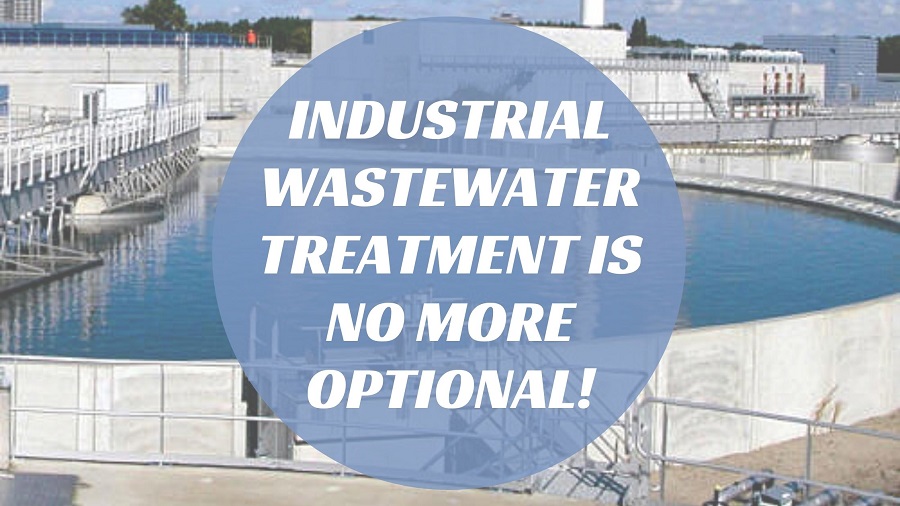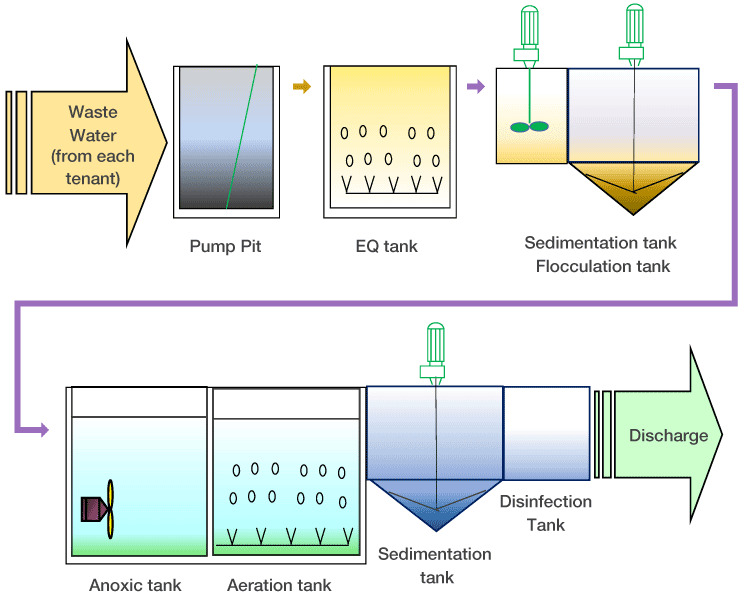Industrial Waste Water Treatment-- Advanced Solutions for Cleaner Effluents
Industrial Waste Water Treatment-- Advanced Solutions for Cleaner Effluents
Blog Article
Key Strategies in Hazardous Waste Water Treatment Processes
The therapy of industrial wastewater is a crucial aspect of ecological management, entailing a variety of techniques created to reduce the influence of pollutants. From the fundamental physical techniques that divide solids to the advanced chemical and biological procedures that target particular toxins, each technique plays a vital duty in accomplishing water quality requirements. Innovations in innovations such as membrane layer purification and advanced oxidation processes supply ingenious remedies for boosting treatment efficiency. Understanding exactly how these techniques adjoin and their implications for sustainability raises crucial inquiries concerning the future of wastewater management in industry.
Physical Treatment Techniques
Exactly how efficiently can physical treatment methods deal with the complexities of industrial wastewater? Physical therapy approaches play a crucial duty in the initial stages of wastewater administration, focusing mainly on the removal of solids and large particulates. Strategies such as filtration, sedimentation, and flotation protection are necessary for minimizing the concentration of suspended solids, thereby enhancing the performance of subsequent treatment procedures.
Sedimentation entails the gravitational settling of solids, permitting the separation of heavier products from the wastewater. This technique is particularly reliable in clearing up water prior to chemical or biological treatments. Purification, on the other hand, makes use of different media to capture particle matter, guaranteeing that smaller impurities are eliminated. This technique can be customized to accommodate various sorts of commercial effluents, creating more clear effluent streams.
In addition, flotation approaches, which utilize air bubbles to raise suspended solids to the surface for elimination, work in dealing with wastewater with high concentrations of fats, oils, and greases. On the whole, physical treatment approaches act as an essential very first step in the detailed administration of industrial wastewater, making sure that the load on subsequent therapy phases is minimized and improving total treatment effectiveness.
Chemical Therapy Methods
While physical therapy techniques lay the groundwork for reliable wastewater administration, chemical therapy methods are crucial for attending to the more intricate contaminants often discovered in industrial effluents. These techniques utilize different chemical agents to precipitate, counteract, or oxidize damaging materials, guaranteeing an extra extensive elimination of pollutants.
One usual approach is coagulation and flocculation, where chemical coagulants such as light weight aluminum sulfate or ferric chloride are contributed to promote the aggregation of put on hold particles. This process boosts solid-liquid splitting up, decreasing turbidity and enhancing water top quality. Additionally, neutralization procedures are used to adjust the pH of wastewater, using bases or acids to counteract acidic or alkaline streams, respectively.
Oxidation-reduction reactions play a vital duty in degrading organic pollutants and microorganisms. Chemical oxidants like chlorine, hydrogen, or ozone peroxide are used to damage down complex organic compounds, making them less damaging or a lot more eco-friendly. Progressed oxidation processes (AOPs) integrate several oxidation methods to improve contaminant removal effectiveness.
Organic Treatment Processes
The efficiency of wastewater treatment is substantially improved by biological treatment processes, which harness the natural metabolic tasks of microbes to disintegrate raw material and remove pollutants. Industrial Waste Water Treatment. These procedures largely entail anaerobic and cardiovascular digestion, each tailored best site for specific kinds of wastewater
Cardiovascular treatment processes utilize oxygen to sustain microbial development, advertising the malfunction of organic pollutants right into co2 and water. Common methods consist of triggered sludge systems, where aeration tanks promote the mixing of wastewater with microorganisms, and flowing filters, which motivate biofilm go to my site advancement on media surface areas.
Alternatively, anaerobic treatment processes happen in the absence of oxygen, making use of anaerobic microorganisms to break down raw material, resulting in biogas manufacturing, a renewable resource resource. Anaerobic digesters are typically utilized in commercial settings for this purpose, efficiently lowering the volume of sludge while creating beneficial biogas.
The choice of a biological therapy method depends upon wastewater qualities, treatment objectives, and regulatory criteria. The assimilation of organic processes in wastewater treatment not only enhances contaminant elimination performance but likewise promotes sustainability by minimizing chemical use and sustaining source healing.
Advanced Oxidation Processes

Usual AOP strategies consist of Fenton's photocatalysis, reagent, and ozonation. Fenton's reagent, a combination of hydrogen peroxide and ferrous iron, militarizes the development of hydroxyl radicals, making it reliable for treating wastewater consisting of phenolic compounds and various other recalcitrant compounds. Ozonation uses ozone as an effective oxidant, capable of deteriorating a large range of natural toxins while at the same time decontaminating the effluent. Photocatalysis utilizes light-activated drivers, such as titanium dioxide, to improve oxidation responses and get rid of contaminants.
AOPs provide a number of benefits, consisting of minimized sludge manufacturing and the capacity to deal with wastewater with high focus of natural toxins. The execution of AOPs calls for mindful factor to consider of operational parameters and cost-effectiveness, ensuring that these advanced methods are properly incorporated right into existing wastewater therapy systems.
Membrane Layer Filtering Technologies

Microfiltration works for getting rid of suspended solids and bacteria, while ultrafiltration targets smaller sized organic molecules and viruses. Nanofiltration bridges the space between ultrafiltration and reverse osmosis, successfully getting rid of natural substances and divalent ions. Reverse osmosis provides the greatest degree of filtration, used mainly for desalination and eliminating mono-valent ions.
Membrane innovations offer many advantages, consisting of reduced power consumption contrasted to typical therapy approaches, modular layout for scalability, and the potential for water recuperation and reuse. Nevertheless, challenges such as membrane fouling and the need for normal maintenance must be resolved to guarantee system efficiency. In general, membrane purification modern technologies stand for a vital part of contemporary industrial wastewater treatment approaches, advertising sustainability and resource conservation in water management.
Verdict
In final thought, commercial wastewater treatment utilizes a varied array of methods, consisting of physical, chemical, biological, and progressed approaches. Continued improvements in these methodologies will better improve the effectiveness and performance of wastewater treatment processes in industrial setups.
The therapy of industrial wastewater is an important facet of environmental administration, entailing an array of techniques created to minimize the effect of impurities.How efficiently can physical therapy methods resolve the intricacies of industrial wastewater?Advanced oxidation processes (AOPs) represent an innovative strategy in industrial wastewater treatment, created to properly weaken organic pollutants that are frequently resistant to traditional treatment techniques (Industrial Waste Water Treatment).In final thought, commercial wastewater treatment employs a varied range of methods, including physical, chemical, biological, and advanced techniques. Continued improvements in these methods will certainly additionally enhance the effectiveness and efficiency of wastewater treatment processes in industrial setups
Report this page